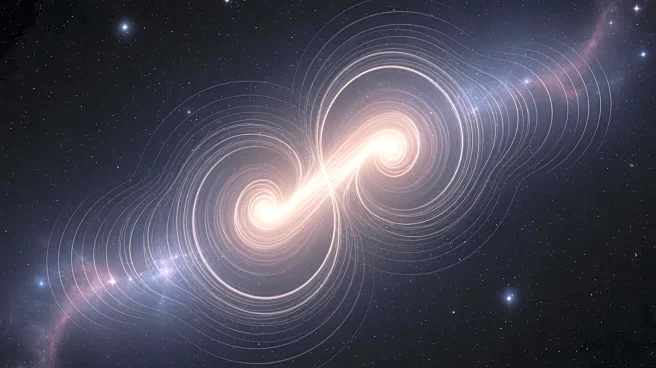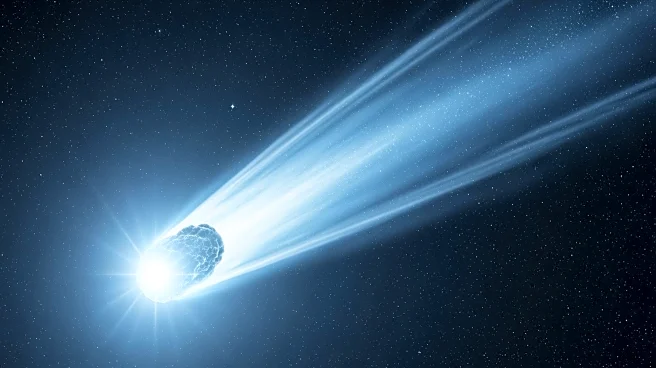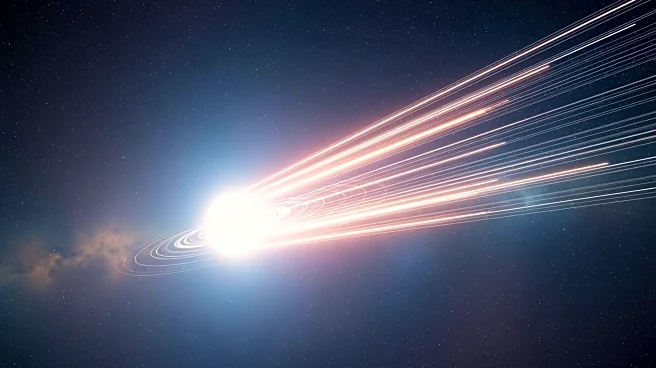What's Happening?
Researchers at the Niels Bohr Institute and University of Lisbon have conducted simulations of black hole mergers, revealing the potential existence of late-time gravitational-wave tails. These tails,
which occur after the initial ringdown phase, could provide new insights into the large-scale structure of regions containing black holes. The study suggests that these tails have a larger amplitude than previously predicted, making them observable in future experiments. The research highlights the nonlinear nature of gravity and its ability to interact with itself, offering a new avenue for studying gravitational phenomena.
Why It's Important?
The discovery of gravitational-wave tails opens a new window for studying the universe's structure and the properties of black holes. These tails provide complementary information to the ringdown phase, offering insights into the dynamics of spacetime and the behavior of gravity at large scales. Observing these tails could enhance our understanding of general relativity and the fundamental forces governing the universe. The research also underscores the importance of advanced gravitational-wave detectors in probing the complexities of black hole mergers.
What's Next?
Future experiments with gravitational-wave observatories will aim to detect these tails, providing further evidence of their existence and characteristics. Researchers will continue to refine their models and simulations to better understand the nonlinear effects of gravity and their implications for cosmology. The study's findings may lead to new techniques for analyzing gravitational-wave data and exploring the universe's hidden structures.











